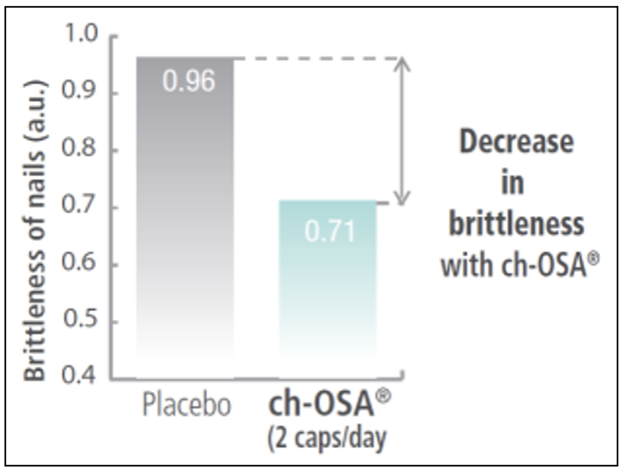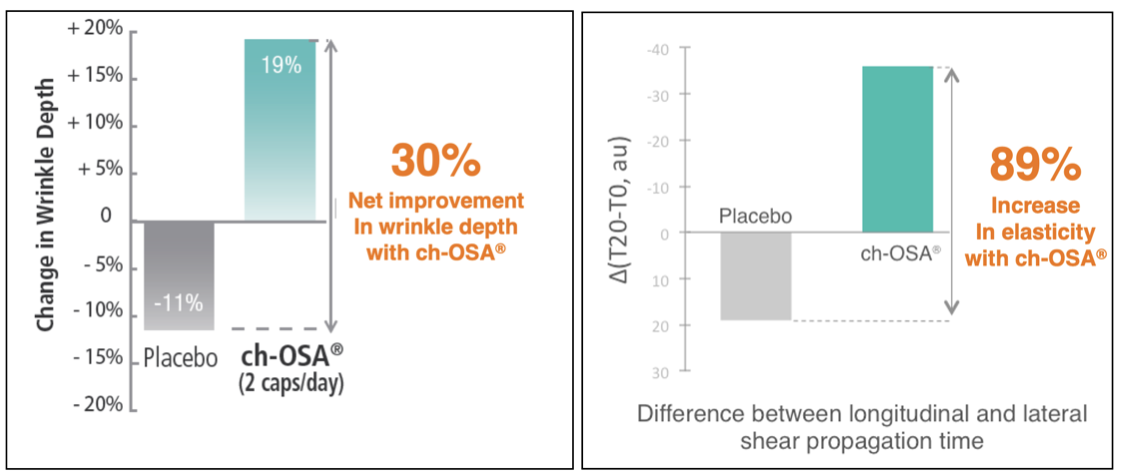Clinical Trials: Photodamaged Skin
This randomized, double-blind, placebo-controlled study involving 50 women with clinical signs of photo-ageing of facial skin took place over 20 weeks, and was led by Professor Andre Barel of Vrije Universiteit Brussel, Belgium. It was co-authored by A. Timchenko, P. Clarys, K. De. Paepe, and V. Rogiers (also of Vrije Universiteit Brussel, Belgium); and Mario R. Calomme, Nathalie Demeester, and Dirk Vanden Berghe (University of Antwerp, Belgium). The study was peer-reviewed and published in the journal Archives of Dermatological Research in 2005.
Researchers found that people taking ch-OSA® had a total reduction of 30% in the depth of their fine lines and wrinkles.
What we found
In other words, the ch-OSA® group measured an average of 19% reduced depth in wrinkles from baseline, while the placebo group's lines worsened by 11% over the course of the study.
Simultaneously, researchers measured a 45% improvement in skin elasticity in the ch-OSA® group, while the placebo group's elasticity deteriorated by another 44% in the same period. Overall, ch-OSA® caused an average elasticity increase of 89%.
Finally, the ch-OSA® group rated the brittleness of their hair and nails to have decreased significantly, whereas the women in the placebo group observed no significant change.
Summary
Compared to the placebo group, the participants taking ch-OSA® were measured to have:
30% reduction in depth of fine lines and wrinkles
89% improvement in skin elasticity
Hair and nail brittleness was rated to be significantly improved
Participants
The participants were 50 healthy Caucasian women, aged 40 to 65—with a mean age around 50—who all showed signs of facial photo-ageing. That is, in addition to the regular effects of aging, their skin showed evidence of sun damage.

Figure 1: Self-described brittleness of hair and nails in women who took ch-OSA® or a placebo. Brittleness was evaluated on a 4-point scale: “0” no brittleness, “1” slight, “2” moderate, and “3” severe.

Conclusions
The researchers concluded that the reduction in fine lines and the improvement in skin elasticity was due to both regeneration and new production of collagen fibers, activated by ch-OSA®. The result is a much denser, younger-looking collagen framework in the skin.